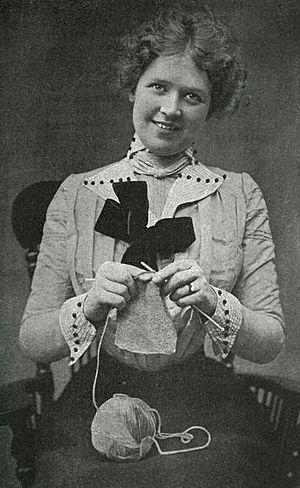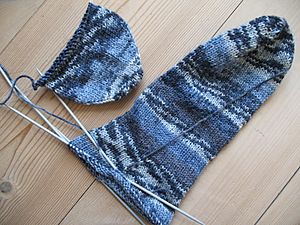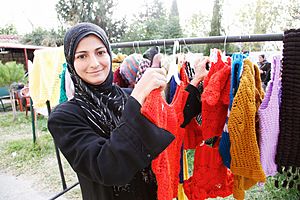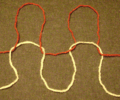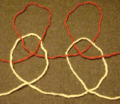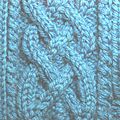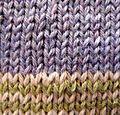Knitting facts for kids
Knitting is a fun way to make fabric using yarn. People often use this fabric to make clothes like sweaters, hats, and scarves. When you knit, you make many loops of yarn, called stitches. These loops are held on a needle as you work.
Knitted fabric is made of rows of connected loops. To make a new row, you pull a new loop through an old one. Then you move the new loop to another needle. You can knit by hand or with a machine. Different kinds of yarn, needle sizes, and stitch types create fabrics with different looks and feels. For example, some fabrics are warm, while others are light.
Contents
Different Ways to Knit
There are a few main ways to knit, depending on what you want to make:
- Flat knitting: This is usually done on two straight needles. It makes a flat piece of fabric. You can use flat knitting to create things like blankets, scarves, or the front and back parts of sweaters.
- Circular knitting: This type of knitting uses circular needles or special double-pointed needles. It makes a seamless tube of fabric. Circular knitting is great for making hats, socks, mittens, and sleeves.
- Cable knitting: This is a special way to knit patterns called cables. These patterns often look like braided ropes. You usually see cable patterns on sweaters. Different kinds of stitches create different patterns. For example, the stretchy ends of knitted sleeves are called ribbing.
What You Need to Knit
To start knitting, you mainly need two things:
- Yarn: Yarn for knitting can be made from many different materials. Some common ones are natural fibers like wool, cotton, or silk. You can also find yarn made from man-made fibers like acrylic. Some yarns even mix different kinds of fibers together.
- Needles: Knitting needles come in various shapes and sizes. You can find straight needles, double-pointed needles, cable needles, and circular needles. They can be made from materials like bamboo, aluminum, steel, or plastic.
How Knitting Helps You
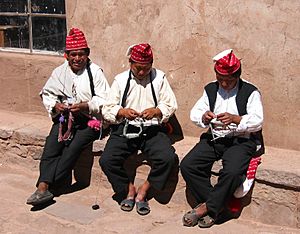
Knitting is not just a fun hobby; it can also be good for your health! Studies show that knitting by hand can help you in several ways:
- Reduces stress: The repeated movements of knitting can help you relax. This can lower your blood pressure and heart rate, making you feel calmer. It can also help manage stress, pain, and even sadness.
- Boosts mood: Knitting can change your brain chemistry. It can increase "feel-good" hormones like serotonin and dopamine, which can make you happier and less stressed.
- Keeps your brain sharp: Just like physical exercise helps your body, mental activities like knitting help your brain stay strong. Some studies suggest that hobbies like knitting might even lower the risk of developing memory problems like Alzheimer's disease.
- Connects you with others: Knitting can be a great way to meet new people. Many libraries and yarn stores have knitting groups where you can meet other knitters and share ideas.
- Improves hand movement: The movements involved in knitting can make your hands and fingers more flexible. This can be especially helpful for people with arthritis, as daily knitting might reduce pain.
Images for kids
-
A modern knitting machine.
-
An example of cable knitting.
-
Close-up of the front of stockinette stitch.
-
Close-up of the back of stockinette stitch.
-
A close-up of "Jitterbug" – knitted glass by Carol Milne.
See also
 In Spanish: Punto (lana) para niños
In Spanish: Punto (lana) para niños


